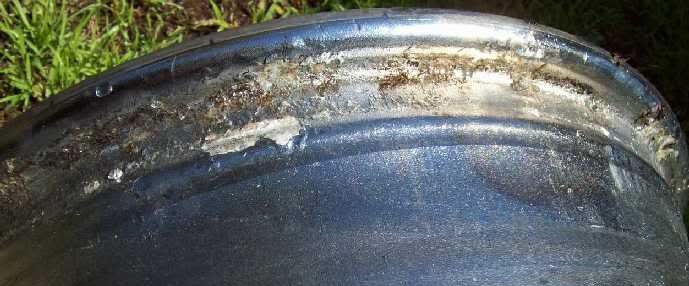A flat tire can be an unexpected road hazard, but when it’s caused by a bead leak, it can leave you scratching your head. A bead leak occurs when air escapes from the seal between the tire bead and the wheel rim, resulting in a slow but persistent loss of tire pressure. Fixing a bead leak is a relatively easy DIY project that can save you time and money.

Image: www.youtube.com
To get started, you’ll need a few tools and materials: a tire repair kit, a bead sealer, a tire gauge, and a compressor. Once you have everything you need, follow these steps to fix a bead leak:
Prepare the Tire
Position the tire in a well-ventilated area and chock the wheels to prevent it from rolling. Use a tire gauge to determine how much air the tire has lost. If the tire is nearly flat, you may need to use a compressor to reinflate it before you can safely remove it from the vehicle.
Remove the Tire
Use a jack to lift the vehicle and secure it with a jack stand. Loosen the lug nuts on the tire with a wrench, but do not remove them completely. Use a tire iron to break the bead of the tire by inserting it between the tire and the rim and prying it up. Work your way around the entire circumference of the tire, using the tire iron to progressively break the bead.
Clean the Bead
Once the tire is removed from the wheel, inspect the bead for dirt, debris, or corrosion. Use a wire brush or a sharp object to clean the bead and remove any foreign objects. Use a degreaser to clean the bead and the mating surface of the rim, ensuring that there is no grease or oil that could interfere with the seal.

Image: www.utires.com
Apply Bead Sealer and Reinstall the Tire
Apply a generous amount of bead sealer to the bead of the tire, being careful not to get any on the tread. Place the tire back on the rim and make sure it is properly seated. Reinstall the lug nuts and tighten them evenly. Use a torque wrench to tighten the lug nuts to the manufacturer’s specifications.
Inflate and Inspect the Tire
Inflate the tire to the recommended pressure using a compressor. Use a tire gauge to verify the pressure. If the tire is still leaking, rotate it slightly and reinflate it. Monitor the tire for a few hours or overnight to ensure that the leak has been sealed. If the tire is still leaking after you have followed these steps, it is likely that there is a more serious issue, and you should seek professional assistance.
Tips and Expert Advice
- Always inspect your tires regularly for signs of damage or wear. A small leak can quickly become a bigger problem if it is not addressed promptly.
- If you are not comfortable fixing a bead leak yourself, do not hesitate to seek professional assistance. A tire shop can quickly and easily fix the leak, giving you peace of mind on the road.
- Carry a tire repair kit in your vehicle in case of a flat tire. A repair kit can help you temporarily seal a puncture until you can get to a tire shop for a more permanent solution.
FAQ
Q: What are the causes of bead leaks?
A: There are various causes of bead leaks, including a punctured tire, a damaged or corroded bead, or a loose or improperly seated tire.
Q: How can I prevent bead leaks?
A: To prevent bead leaks, always inflate your tires to the correct pressure, avoid driving on damaged roads, and have your tires inspected by a tire professional regularly.
Q: What is the difference between a bead leak and a puncture?
A: A bead leak occurs around the bead of the tire, where it seals against the rim. A puncture is a hole in the tread or sidewall of the tire, caused by nails, screws, or other sharp objects.
Q: Can I fix a bead leak permanently?
A: In most cases, applying bead sealer to the bead of the tire and reinstalling the tire correctly will permanently seal the leak. However, if the bead is damaged or corroded, a more permanent solution may be required.
Q: Can bead sealer be used on tubeless tires?
A: Yes, bead sealer can be used on tubeless tires. However, it is important to follow the manufacturer’s instructions carefully to ensure a proper seal.
How To Fix A Bead Leak On A Tire
Conclusion
Fixing a bead leak is a straightforward process that can save you time and money. By following these steps and tips, you can get back on the road safely and without delay. If you are experiencing a bead leak, do not hesitate to take action. Prompt repair can prevent further damage to the tire and ensure that your vehicle is operating at peak performance.
Are you interested in other tire-related topics? Let us know in the comments section!